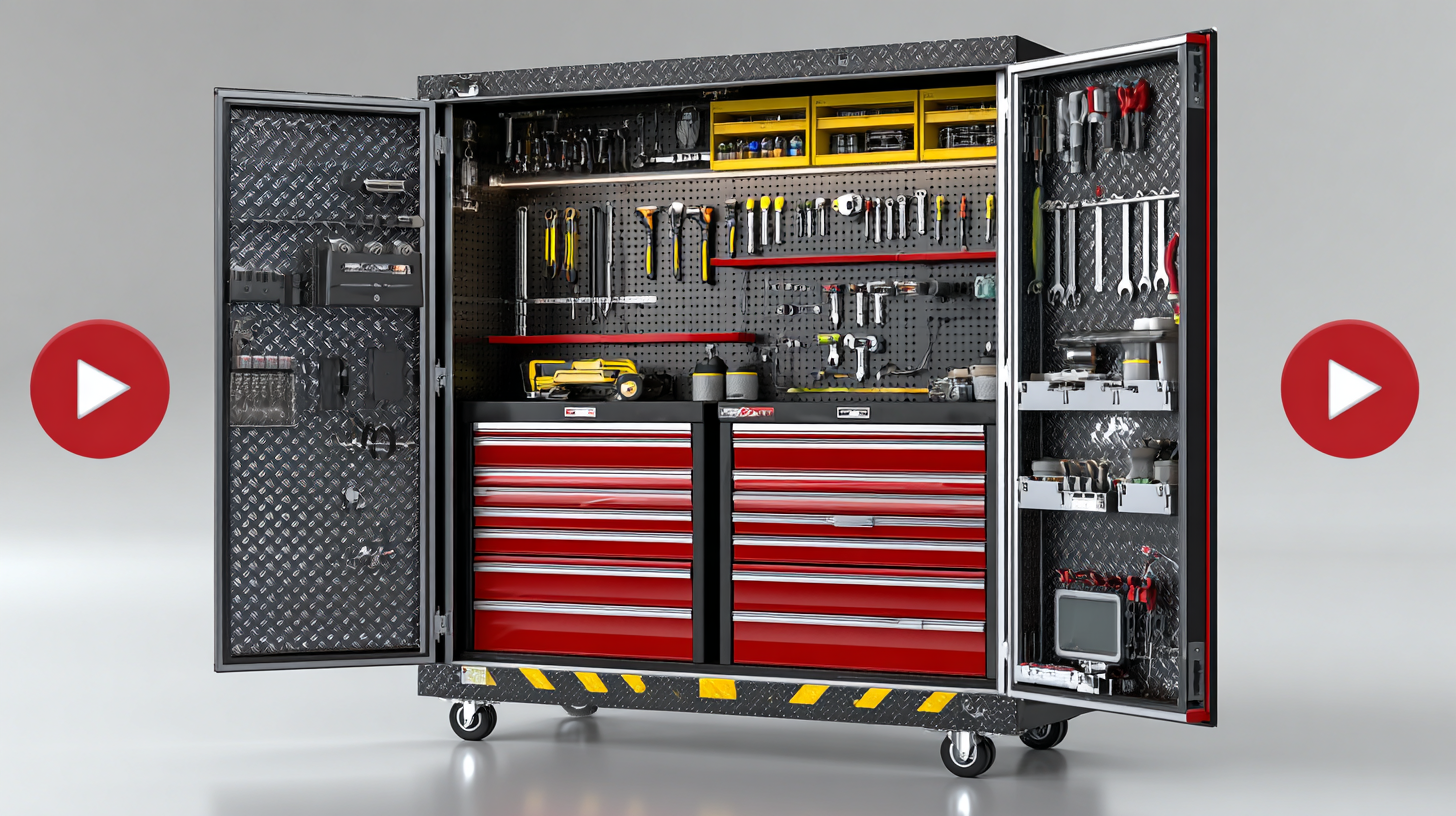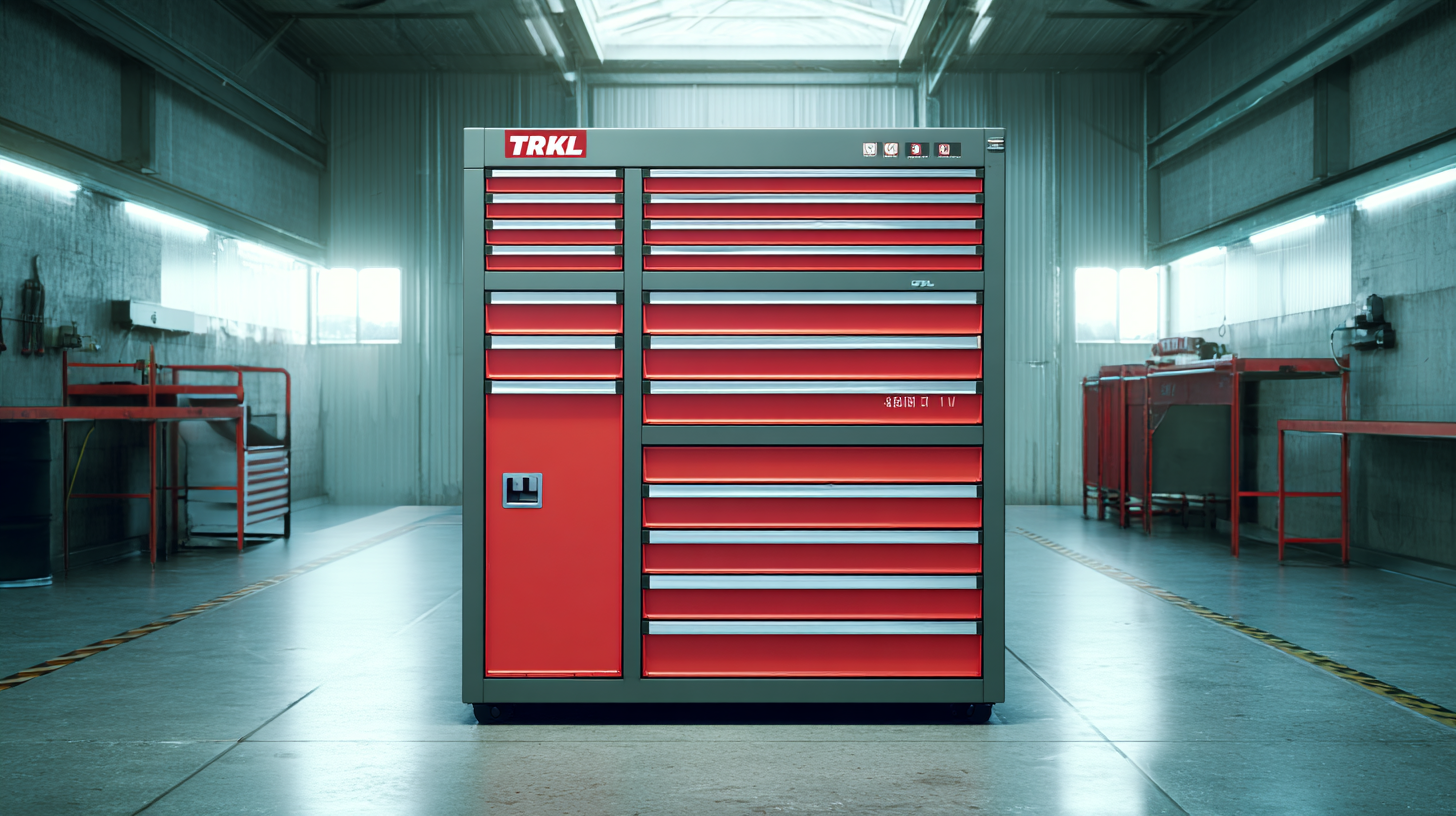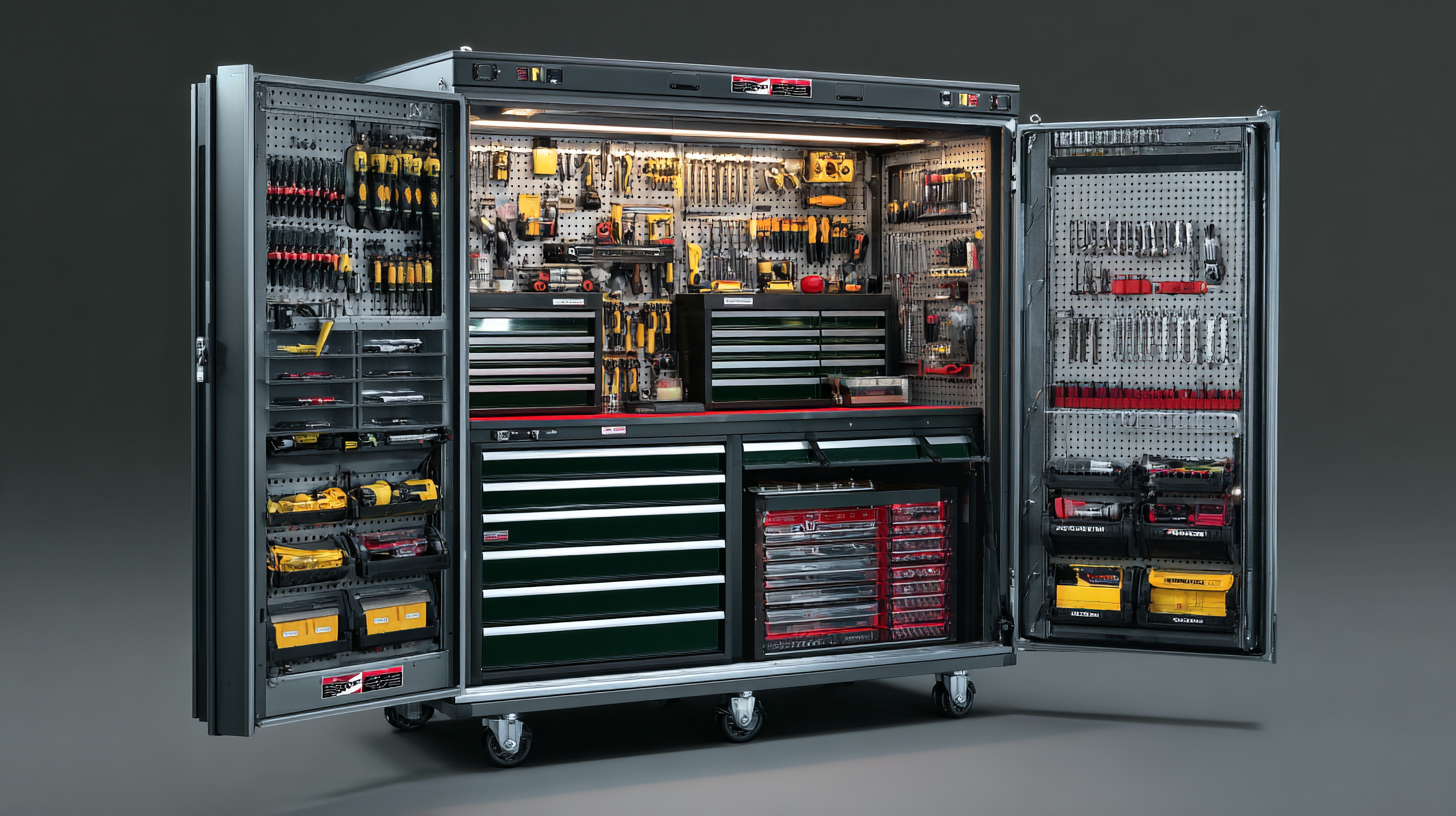Send Inquiry CYJY
We Would Be Happy To Serve You

Maximize Efficiency with Best Tool Cabinet Through Exceptional After Sales Support and Low Repair Costs
In today's fast-paced industrial environment, maximizing efficiency is paramount, and the right Tool Cabinet can be a game-changer for businesses.
According to a recent report by Market Research Future, the global tool storage market is expected to reach $6.2 billion by 2025, driven by the increasing need for organized workspace solutions in various sectors.
Tool Cabinets not only provide essential storage but also enhance the productivity of mechanics, technicians, and DIY enthusiasts by allowing easy access to tools, thereby minimizing downtime.
 Moreover, with exceptional after-sales support and low repair costs becoming critical factors in purchasing decisions, investing in high-quality Tool Cabinets is a strategic opportunity.
As companies aim to optimize their operations, understanding the unique features and benefits of different types of Tool Cabinets can lead to more effective workplace solutions, ultimately driving success in their respective industries.
Moreover, with exceptional after-sales support and low repair costs becoming critical factors in purchasing decisions, investing in high-quality Tool Cabinets is a strategic opportunity.
As companies aim to optimize their operations, understanding the unique features and benefits of different types of Tool Cabinets can lead to more effective workplace solutions, ultimately driving success in their respective industries.
Key Benefits of Investing in a Quality Tool Cabinet for Your Workshop
Investing in a quality tool cabinet can significantly enhance your workshop's efficiency. A well-organized tool cabinet not only saves time when searching for tools but also promotes a safer work environment by keeping your workspace clutter-free. A cabinet with designated compartments allows you to easily access tools and supplies, ensuring that you can focus more on your projects rather than on locating your equipment.
Tip 1: Keep your most frequently used tools within easy reach. By placing these tools at the top or front of the cabinet, you can minimize interruptions during your work, boosting productivity.
Additionally, exceptional after-sales support and low repair costs can make a significant difference in your investment. Quality tool cabinets often come with warranties and reliable customer service. This means if you encounter any issues, the manufacturer will support you, reducing downtime and potential repair expenses.
Tip 2: Regularly check and maintain your tool cabinet. Clean it out periodically and reorganize tools to keep everything in top condition. This proactive approach can extend the life of your cabinet and ensure that you always have a functional workspace ready for your next project.

Ensuring Longevity: The Importance of Exceptional After Sales Support
Exceptional after-sales support has become a critical component in ensuring the longevity and efficiency of tool cabinets. According to a report by the American Society for Quality, 70% of customers say they are more likely to remain loyal to a company that offers excellent post-purchase assistance. This highlights the importance of ongoing support in enhancing user experience and maintaining the integrity of the products over time. Tool cabinets that come with dedicated after-sales services not only provide peace of mind but also contribute significantly to reducing overall repair costs, which can average between 15% to 30% of the original purchase price.
To maximize efficiency, businesses should consider implementing a systematic approach to after-sales service. One effective tip is to establish a proactive communication channel where customers can easily report issues and receive timely assistance. Additionally, offering regular maintenance workshops can empower users to better care for their tool cabinets, minimizing wear and tear and, ultimately, repair costs.
Another key aspect is to provide clear guidelines and resources for troubleshooting. Providing a user-friendly online platform or app where customers can access step-by-step instructions can drastically reduce the number of service calls. Investing in exceptional after-sales support not only enhances customer satisfaction but also ensures that tool cabinets remain a reliable asset for years to come.
Maximize Efficiency with Best Tool Cabinet Through Exceptional After Sales Support and Low Repair Costs - Ensuring Longevity: The Importance of Exceptional After Sales Support
| Feature | Importance | After Sales Support | Repair Costs | Longevity |
|---|---|---|---|---|
| Durable Material | High resilience to wear | 24/7 customer service | Low annual maintenance fee | 5+ years |
| Organizational Features | Increases productivity | Quick response for queries | Affordable spare parts | 7+ years |
| Space Efficiency | Maximizes workspace | Scheduled maintenance services | Minimal downtime costs | 10+ years |
| Mobility | Easier transport | User-friendly guidance | Cost-effective repairs | 8+ years |
| Security Features | Protects tools and equipment | Proactive issue tracking | Low risk of theft | 12+ years |
How Low Repair Costs Contribute to Overall Efficiency in Tool Management
In the realm of tool management, achieving maximum efficiency is often a balancing act between high-quality equipment and manageable operational costs. One significant factor that contributes to overall efficiency is the advantage of low repair costs associated with tool cabinets. When tools are well-maintained and easily accessible, the likelihood of damage reduces substantially, allowing for smoother workflow and decreased downtime.
A robust after-sales support system further amplifies this efficiency. With responsive service and readily available replacement parts, any potential disruptions stemming from repairs can be swiftly minimized. Companies that invest in high-quality tool cabinets alongside reliable after-sales support tend to cultivate a culture of efficiency. Workers can trust that their tools are in optimal condition, leading to increased productivity and less time wasted on troubleshooting or dealing with repairs.
Moreover, low repair costs encourage proactive maintenance practices. Organizations can allocate resources effectively, using the savings incurred from fewer repairs to invest in training staff on proper tool usage and care. This holistic approach to tool management not only enhances operational efficiency but also instills a sense of accountability among team members regarding the upkeep of their tools.
Maximize Efficiency with Best Tool Cabinet: Impact of Low Repair Costs on Tool Management
This bar chart illustrates the average repair costs associated with various tools. Lower repair costs contribute to overall efficiency in tool management, allowing for better resource allocation and improved productivity.
Choosing the Right Tool Cabinet: Factors to Consider for Optimal Performance
When choosing the right tool cabinet for optimal performance, several critical factors must be considered. First, the material quality is paramount; cabinets made from heavy-duty steel often offer enhanced durability and can withstand wear and tear from daily use. A survey conducted by industry analysts indicates that tool cabinets with robust construction typically have a lifespan that exceeds 15 years, providing long-term value for professionals and hobbyists alike.
Furthermore, storage capacity and organizational features play a significant role in maximizing efficiency. Reports show that tool cabinets with customizable drawer configurations and modular designs allow users to organize their tools effectively, reducing time spent searching for the right equipment. In workplaces, this efficiency translates directly into productivity gains, with some studies showing improvement rates of up to 30% when tools are readily accessible and well-arranged.
Finally, exceptional after-sales support is crucial. A study from consumer durability trackers highlights that tool cabinets backed by strong warranty programs and responsive customer service can reduce repair costs by as much as 25%. By investing in a high-quality tool cabinet with comprehensive support, users can ensure that they maintain their efficiency and performance for years to come.
Future Trends in Tool Cabinets: Innovations for Enhanced User Experience
The future of tool cabinets is being shaped by innovative technologies that enhance user experiences and streamline workflow. According to a recent report by Grand View Research, the global tool storage market is expected to reach $5.2 billion by 2028, with a CAGR of 4.3%. This growth highlights the rising demand for tool cabinets that not only provide storage but also integrate features like smart technology and modular designs. For instance, tool cabinets equipped with wireless connectivity allow users to track inventory and manage tools more efficiently, thus reducing time wasted on searching for equipment and boosting overall productivity.

Innovations are also focusing on ergonomics and user-centric designs. A study published by the American Society of Safety Engineers indicates that ergonomically designed tool storage solutions can reduce workplace injury by up to 30%. This shift towards user-friendly designs ensures that professionals have an easier time accessing tools, thus minimizing strain and enhancing workflow efficiency. Additionally, the introduction of sustainable materials in tool cabinet production addresses environmental concerns, attracting eco-conscious consumers and businesses alike. With such advancements, tool cabinets are evolving into essential components of modern workspaces, merging functionality with user experience.
